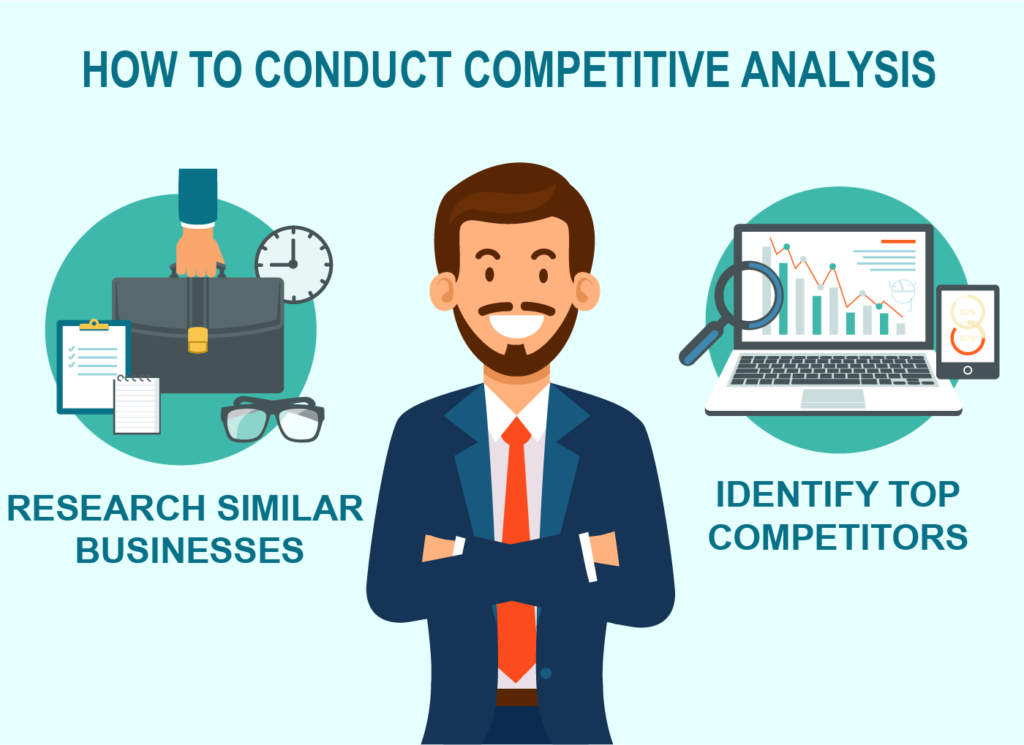How to start a business series – Chapter 2 – Competitive Analysis
A competitive analysis is a crucial section of a company’s marketing plan. A robust evaluation will assist in determining the uniqueness of your product or service. The results will serve as a guide to emphasize the right attributes and how to target your market.
As a business owner, you should always maintain yourself up-to-date with any significant change from your competition. While it is strongly suggested to conduct an analysis prior to opening a business, it should also be an ongoing task.
Why is it essential to research competitors?
Analyzing your competition on an ongoing basis can prove to be very beneficial in many ways. Understanding oppositions’ differences and similarities enable you to identify distinctive ways you can exceed their performance. Furthermore, the collected data will assist you in deciding on launching a new product or service.
Valuable information is available in the public domain, from financial filings to reports compiled by companies like Hoovers and Dun & Bradstreet. Additionally, you can find articles written about different companies in your local newspaper.
I often refer to the research collection process as “Competitive intelligence gathering.”
How to conduct your competitive analysis
1- Identify your top competitors

Create a list of every company that provides the same or similar products or services. While some suggest that you need at least ten competitors to analyze, the number will vary depending on your location. Being in New York City is a lot different than being in Cody, Wyoming. The population and demographics of these locations will require a different approach. A business in a bigger city will create a relevant radius and find competitors within that area. At the same time, when dealing with smaller demographics, you will have to consider the entire town and even neighboring ones.
To create a radius and find the businesses within your area, Google will be the best tool. If you are a national company or sell online, your research goes into another level. You can use tools such as SEMrush, which includes ranking, keywords, etc. It is a great tool that can identify your online competition. Your ultimate goal is to get a comprehensive view of the competitive landscape.
2- Categorize your competition
Now that you have an inclusive list of your top competitors, you will want to break it down into categories.
- Primary Competition: These are your direct competitors. They are targeting the same audience and have the same or similar products — or both.
- Secondary Competition: These are usually the high- or low-end versions of your product or service. They might target a similar or completely different audience.
- Tertiary Competition: This includes businesses who are peripherally related to yours. They might be selling products or services that are trending. It is interesting to keep tabs on them as you might be able to create a beneficial partnership with them. For instance, if you provide janitorial services, a tertiary competitor would provide carpet cleaning.
It is strongly suggested to have at least a few of each category. Create a spreadsheet and add the following information: business name, location, mission statement, the product offered, strength and weaknesses, and the group of the competition.
3- Examine your competitor’s website and customer experience

I often refer to this step as intelligence analysis. Using a word processor, take detail notes from each of the following items:
- Photography: Note the pictures on the site; are they high or low quality, the details of it.
- Product information: How is the description of each product? What information is included? What information is missing?
- Call for action: Where is the call for action buttons on their site? Is it in a conspicuous place, or lost with all the colors and images?
- Email collection: Are they building an email list using a newsletter sign-up prompt?
- Social Media: Where are the icons positioned throughout the site?
- Blog: Is there a blog? How often is it updated? What kind of information is provided?
- Mobile compatibility: Is the site optimized for mobile?
- Support: What kind of hours do they run? Do they have phone support?
- Response time: How long does it take for them to respond? Use the chat, email, and online form
- Banners: What kind of information is on their banner and callouts?
- Promotions: How frequent are they running promotions? How often? What are the benefits of these promotions?
Also, you should create a SWOT analysis for each of those businesses. Understanding their fragilities and strong points will help you think dynamically for your own business. From there, you will be able to identify your competitive advantage in the market.
4- Position your competitor in the market
By analyzing your competition, you will begin to get a feel for the market’s demands and expectations. Set up a scale and begin to place each rival around the areas you believe they will fit best.

Furthermore, digging deeper into their site, answer the following questions:
- What are the customers purchasing from them?
- Are customers purchasing because of the price or experience?
- How are their products different?
- What features and benefits they highlight the most in their marketing?
- According to them, what makes the product or service unique?
These questions should be answered just by spending time on their website. Otherwise, they are falling short in marketing.
As I have mentioned, collecting intelligence is an ongoing task. Therefore I highly suggest doing the following:
- Sign up for their newsletter: Get acquainted with their business, and how they communicate with their customers.
- Subscribe and follow their blog: See what they are covering, and how often they do it.
- Follow their social media: Check out what kind of content they are putting out, and how they communicate with customers.
- Purchase a product: Check out what kind of customer service you get. Analyze their packaging and how the product operates
- Put an item in the cart and abandon: Monitor if they will send an abandon cart email, and note how they are doing it.
5- Penetration Strategy
By now, you probably have a good idea of what market you intend to target. Part of market penetration is pricing. Before starting a business is the time for you to set prices for your products or services.
If you are launching a product, it is relatively easy to contact the competition and get their prices. If you are doing a service, it is more complicated than just a quick phone call. This is especially true if you are a B2B service provider. Fear not, because there are ways to go around and find out prices. For instance, when visiting a client, by controlling the conversation, you can find your answer. Additionally, you will find customers who will tell how much they are paying for services. I have written about pricing services here.
It is highly suggested to create a through price list of all the services you provide. For instance, for my service business, the file is internal only, and when the client request works, we offer a quote based on the created files. It is always good to remember that you must maintain profitable margins to keep your business going; it is something that you cannot compromise.
Understanding your target market is crucial at this point. Some segments are willing to pay more for peace of mind, while others are all about a budget.
6- Identify the areas for improvement
After the competitive analysis, you have an understanding of what your competition is doing. Take all the info gathered about each one and select particular areas where you feel it needs improvements. List the competition’s weaknesses, and create a strategy for your strengths, which should be all of their weaknesses.
In summary, competitive analysis is crucial for any business, especially before the initial launch. Knowing the market that you are trying to penetrate will put you a step ahead of the curve. Additionally, studying the best way to engage with your customers will generate loyalty.


Comments are closed.